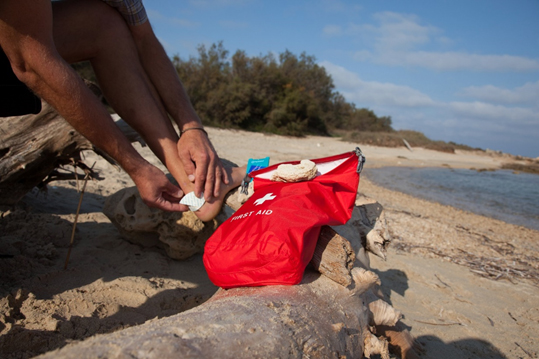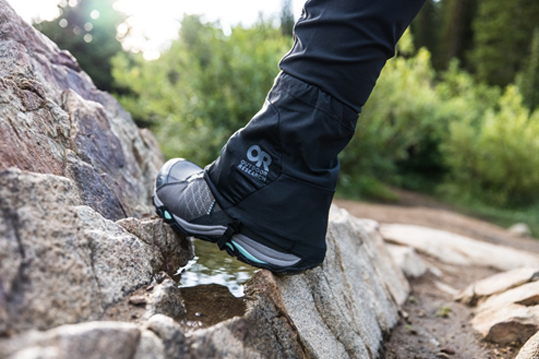First Aid in the Wilderness
Written by K2 Team Member Carter Heading
“Human life is far more important than just getting to the top of a mountain.” – Sir Edmund Hillary
In 1948 Sir Edmund Hillary sheltered and protected an injured climber for three long nights. They awaited a rescue operation on Mount La Perouse in New Zealand after her rope broke. She had slipped 20m and broken her arm. The experience impressed not only him, but the wider community. Particularly at the level of skill and knowledge among those in the rescue mission. Described as "the most arduous rescue in New Zealand's climbing history" the rescue efforts down the Cook Rover to Fox Glacier have been immortalised in New Zealand Mountain folklore. Norman Hardie was one of those rescuers with whom Hillary went on to have a lifelong friendship.
Basic equipment and knowledge of first aid are a must-have on any major adventure. Not only is knowing first aid key to your own safety but also for the safety of those around you. Through preparation, prevention, and planning you can stay safe outdoors.

First Aid Preparation
The first key is having a first aid kit and knowing how to use it. There are many basic first aid training days available if you're looking for a place to start. Alternatively, ask in-store at K2 Base Camp for first aid tips and tricks. The experienced staff, trained in rescue and wilderness first aid will give you an insight into how to treat yourself and others.
Equip's range of first aid kits consists of three smaller kits named REC (for Recreation). As well as three larger, more complex kits named PRO (for Professional). These kits include some of the first aid essentials required. The kit you choose will depend upon the number of people you are caring for and how far away medical support is.
The Equip recreational first aid kits also range from 1 to 3. With the Equip Kit Rec 3 Personal First Aid kit, accommodating serious injuries with an extensive inventory. The same goes for the professional first aid kits, with the Equip Kit Pro 3 Group First Aid Kit featuring medical supplies specifically for Wilderness Survival Instructors. This is suitable for expeditions and remote worksites.
While the Equip Premium Snake Bite Kit includes detailed written instructions in first aid for an Australian snakebite. It contains all the tools and compression bandages you need to treat a snake bite outdoors.
To choose the right kit for your needs, it’s important to consider what adventures you plan on completing. Along with how many people you will be travelling with.
Personal Locator Beacons (PLB’s)
Further to basic first aid kits is a Personal Locator Beacon (PLB). When ‘000’ is not an option and your ‘112’ call (the standard international emergency number) may not work, a PLB is a lifesaving device. PLBs are small beacons that use satellite technology to send a message from your location to search and rescue crews.
The ACR ResQLink 400 is not much bigger than a phone. It is a must-have piece of equipment for solo or group hikers and climbers alike. For harsher conditions and more remote locations, the ACR ResQLink 425 is another great PLB.
Wilderness Must-Haves
- Carrying a flashlight such as the Fenix UC30 or a headlamp on any dawn, dust or overnight adventure is crucial. They are a great way to fight the dark and get light when you need it the most.
- It should go without saying but food and water are also essential. Water purification from tablets, Steripens or LifeStraws will keep you in good stead. As well as some food such as a protein bar or jellybeans to re-fuel.
Other first aid/ survival equipment includes:
Prevention and Planning
As the saying goes, “Hope for the best, prepare for the worst.” Prevention and planning play a key role in keeping yourself safe out on the trails. From Acti-Bliss wool preventing nasty blisters to Gaiters preventing snake bites. Setting off unprepared and unequipped can often end in a painful journey.

Do your research
- Read a map before you head out and get to know the local area.
- Make sure you pick your season and weather window carefully.
Consider the logistics
- Plan your trip and plan it well.
- How will you get to the trailhead?
- Know roughly where you will camp each night.
- Meal planning (including food, snacks and water)
Getting familiar with your gear
- Trial run setting up your tent in the backyard.
- Make sure you know how to use your gas cooker.
- Make sure your boots are well broken in.
- Make sure you know how to use your walking poles.
Know your limits
- You don’t have to push yourself to the brink.
- Make sure you train for your adventure.
A final key to staying safe is to let people know when and where you are going. Periodically Check in with mates and loved ones too on your adventure to give them peace of mind you are safe.
If you have any questions or want to have a chat with our expert team about staying safe in the outdoors. You are always welcome to come in store, shoot us a chat message, or leave a comment!









